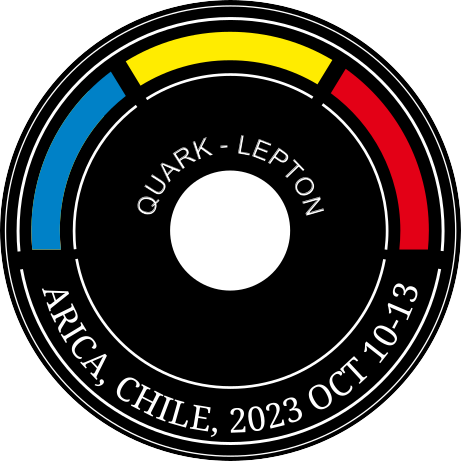Conveners
Parallel Session 1
- Livia Ludhova
Parallel Session 1
- Bernd Stelzer (SFU/TRIUMF)
Parallel Session 1
- Achim Stahl (Rheinisch Westfaelische Tech. Hoch. (DE))
Astroparticles open exciting new horizons in the realm of particle physics research by exploring energy regimes beyond the reach of traditional accelerators. The study of ultra-high-energy cosmic rays involves the observation of the air showers they generate in the atmosphere, offering a unique tool to investigate the most energetic particles in the Universe. The Pierre Auger Observatory, as...
AugerPrime, the ongoing upgrade of the Pierre Auger Observatory, has been designed to improve the sensitivity of ultra-high-energy cosmic ray (UHECR) measurements to a level that enhances the capabilities of the original design. An essential aspect of this upgrade is the installation of the Radio Detector (RD), which consists of antennas mounted on top of each of the 1660 water-Cherenkov...
The Pierre Auger Observatory is the largest facility in the world devoted to the study of ultra-high-energy cosmic rays (UHERCs). Its hybrid design provides the ability to measure multiple mass-sensitive observables simultaneously as well as a calorimetric determination of the primary energy with unprecedented precision. With the completion of its Phase I, and after nearly 20 years of data...
BESIII has collected 2.93, 7.33, and 4.5 fb^-1 of $e^+e^-$ collision data samples at 3.773, 4.128-4.226, and 4.6-4.7 GeV, which provide the largest dataset of $D\bar{D}$, $D_s^*D_s$, and $\Lambda_c\bar{\Lambda}_c$ pairs in the world, respectively.
For charmed mesons, we will report the updated measurements of $D_s^+\to \eta^{(‘)} e^+ \nu_e$, $D_s^+\to \tau^+ \nu_\tau$, and the form factor...
Recent BESIII publication regarding Charmonium studies
The Jiangmen Underground Neutrino Observatory (JUNO) is located in Jiangmen, Guangdong, China, with an overburden of about 700 meters. The baseline for measuring the reactor antineutrinos of two nuclear power plants is 53 km. The central detector composes of 20 kton liquid scintillator, a 35.4 m diameter acrylics sphere, a 40.1 m diameter stainless steel latticed shell, and an independent...
I will describe the status and the R&D efforts towards the next generation of gravitational wave detectors with a focus on the frequency range accesible by detectors on earth, namely the Cosmic Explorer and the Einstein Telescope.
The Jiangmen Underground Neutrino Observatory (JUNO) is an experiment being built in China, which consists of a 20 kt liquid scintillator detector. The main objective of the experiment is to determine the neutrino mass ordering by measuring reactor anti-neutrinos at 53 km baseline. The experiment is also expected to have a high sensitivity to geoneutrinos, electron antineutrinos from natural...
The constituents of dark matter are still unknown, and the viable possibilities span a very large mass range. Specific scenarios for the origin of dark matter sharpen the focus on a narrower range of masses: the natural scenario where dark matter originates from thermal contact with familiar matter in the early Universe requires the DM mass to lie within about an MeV to 100 TeV. Considerable...
The MATHUSLA experiment is a proposed large-volume detector for long lived particles (LLPs) produced at the CERN HL-LHC. The detector would be sited on the surface adjacent to the CMS interaction region, shielded from the LHC by approximately 100m of rock. Non-interacting LLPs which penetrate this rock and decay within the MATHUSLA instrumented volume would be reconstructed via their decays...
